Now Reading: Top 10 Best Places Visiting in Chamba for Nature, Heritage & Spirituality
-
01
Top 10 Best Places Visiting in Chamba for Nature, Heritage & Spirituality

Top 10 Best Places Visiting in Chamba for Nature, Heritage & Spirituality
1. Bhuri Singh Museum
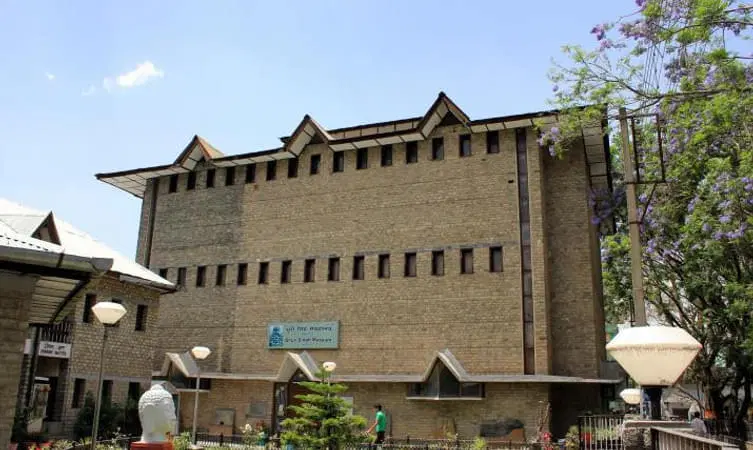
In the town of Chamba inside Himachal Pradesh you will find the Bhuri Singh Museum which serves as an art and historical and cultural repository. Since its founding in 1908 the museum presents visitors with an intriguing display of regional cultural artifacts along with historical manuscripts and paintings and historical relics. A journey to the cultural museum must be on your list for exploring Chamba because this important destination delivers enriching tales to both history lovers and art fans and all visitors who wish to understand local culture.
History
Raja Bhuri Singh as the past ruler of Chamba established this museum due to which it bears his name. As an art and cultural supporter Raja Bhuri Singh made pivotal contributions to maintain the heritage of his region. The royal family of Chamba originally used their collection of items to establish the museum before its expansion began to display many important artifacts from the local heritage.
The Bhuri Singh Museum showcases its primary attraction as the Chamba Rumal which embodies a handkerchief filled with sophisticated patterns and mythological designs. The Chamba Rumal represents the magnificent textile traditions of the area while retaining status as one of the finest artistic textile creations.
Visitors can experience Rajput weaponry and armor displays that reveal local martial traditions as a major exhibition at the museum.
Best Time to Visit
Tourists can visit the Bhuri Singh Museum at any time yet the most favorable period to see Chamba and its cultural highlights extends from March to June and September to November. The moderate temperature conditions create perfect conditions for people to enjoy exploring cultural landmarks during this period.
2. CHAMPAVATI TEMPLE
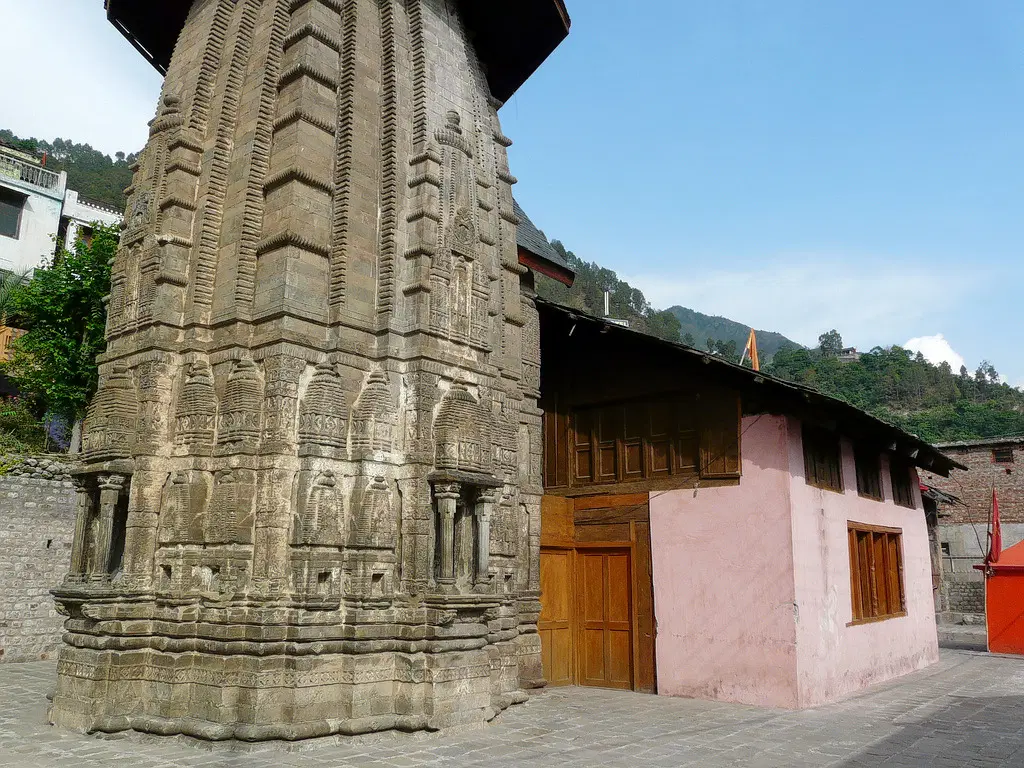
The Champavati Temple rises as a remarkable architectural achievement which stands as a spiritual landmark in the town of Chamba in Himachal Pradesh. Goddess Mahishasuramardini draws worshippers along with cultural history students and explorers who want to learn about the cultural heritage of Chamba. Every tourist who visits the Champavati Temple carries home profound impressions generated by its spiritual significance together with its historical importance and artistic achievements.
History
History envelops the origin story of this temple. Local tradition recounts that Princess Champavati motivated her father King Sahil Varman to construct the temple since he governed Chamba during ancient times. The spiritual soul of the princess influenced her father to build the temple in devotion to Goddess Durga. The construction of the temple emerged after the princess vanished without explanation and the king chose to build it as a memorial to his daughter.
People appreciate the Champavati Temple for its splendid architectural design that combines North Indian temple and traditional Himachali construction methods. During that time the skilled artisans demonstrated their skills through the elaborate stone carvings as well as elaborate spires plus detailed sculptures around the temple. The sanctum of the temple displays a powerful divine form of Goddess Mahishasuramardini as she kills the demonic buffalo demon Mahishasura.
The main entrance of the temple stands out because its intricate details show mythological motifs combined with floral patterns and symbolic decorations which increase its majestic beauty. The temple shows outstanding architectural achievements of Chamba residents who combined their artistic skills with deep devotion in temple construction.
Main Hindu festivals become known for their active presence at the temple because Navratri features elaborate rituals alongside devotional songs and exciting processions to celebrate the Goddess. Visitors find the temple’s traditional atmosphere linked to its historic background to be completely captivating.
Best Time to Visit
The most appropriate period to visit Champavati Temple occurs from March to June and extends through September to November. The weather during these time periods presents excellence conditions to investigate both the temple complex as well as nearby sites. People find it highly rewarding to visit the temple during Navratri because they get to experience its festive activities and participate in religious ceremonies.
3. MANIMAHESH LAKE
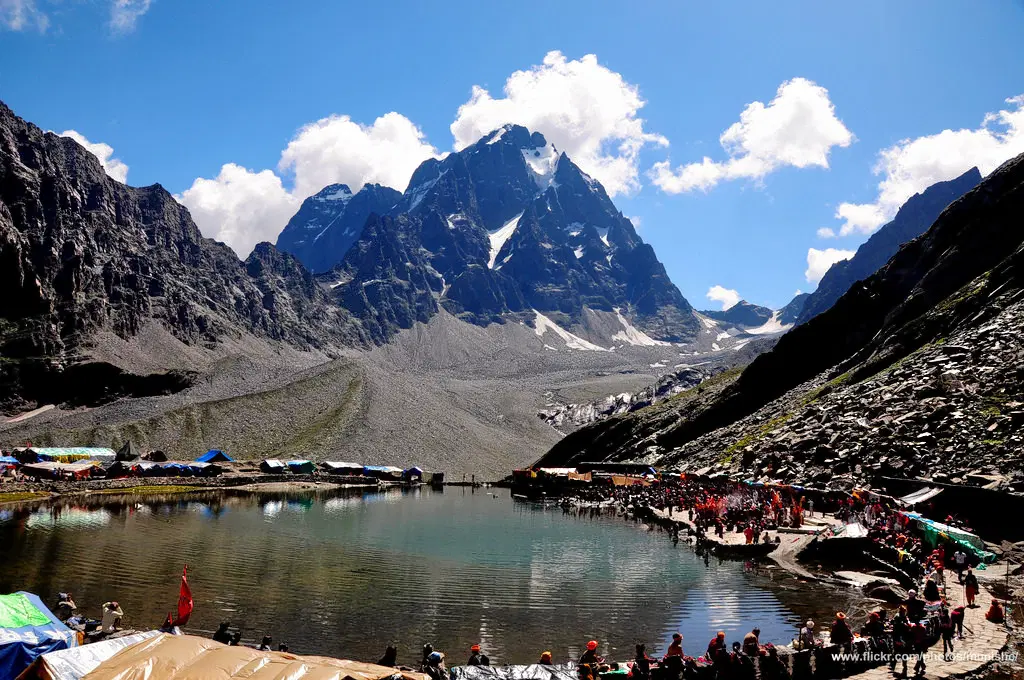
Manimahesh Lake rests at the foothills of Himalayas within the Pir Panjal range in Chamba district’s Bharmour region of Himachal Pradesh. Devotees along with nature admirers acknowledge the special nature of this lake where many visit for religious purposes and trekking adventures. Manimahesh Lake provides a mystical peaceful haven beyond human commotion because it rests amid stunning mountain views with green grass fields and majestic mountain heights.
Local devotees call the lake Manimahesh because the name translates to “Jewel of Lord Shiva” and Hindu mythology endows great significance to this place. Local traditions tell that Lord Shiva and Goddess Parvati reside at this lake which Lord Shiva made when he married Goddess Parvati. According to devotees observing the lake reflection of Mount Kailash (named Manimahesh Kailash) brings a sacred divine blessing.
A trip to Manimahesh Lake entails an exciting challenge that combines sacred significance with breathtaking natural scenery. From Hadsar Village which lies next to Bharmour tourists can access the favorite trekking path. A journey to reach Manimahesh Lake requires a trek of 13 kilometers that normally lasts two to three days according to individual trekking speeds.
The trek path features severe topography, thick woodlands, flowing waterfalls together with breathtaking views of snowy mountain peaks. The journey lets visitors stop at the sacred destinations of Dhancho base camp and Gauri Kund which holds religious importance as it marks the bathing site of Goddess Parvati.
The waterbody of Manimahesh Lake attains recognition for its untouched natural scenery. The sacred lake rests inside a scenic area that embraces Manimahesh Kailash Peak elevation reaching 5653 meters beside extensive green meadows and colorful floral fields. Also during every month of the year the summit maintains snow coverage because people believe Lord Shiva dwells on that peak.
Best Time to Visit
A perfect opportunity to explore Manimahesh Lake occurs when summer meets May and June period alongside early autumn days from August to September. Visitors can take advantage of the mild climate during these months because all trekking paths are easily accessible. Spiritual seekers find the greatest reward when they visit during Manimahesh Yatra.
Visitors need to remain alert about changes in weather conditions in this region because the atmosphere can easily become unpredictable.
4. LAKSHMI NARAYAN TEMPLE

In Chamba aside from Himachal Pradesh stands the magnificent Lakshmi Narayan Temple which serves as a tribute to the strong spiritual traditions and ancient architectural achievements of the region. Worshippers and art enthusiasts can find this sacred temple which honors Lord Vishnu and Goddess Lakshmi. It serves as both a devotion site and a demonstration of artistic excellence and cultural value. Worshippers and history lovers and all types of travelers are drawn to the temple by its handsome stone decorations and refined shikhara design and brilliantly peaceful environment.
History
Under the authority of ruler King Sahil Varman the Lakshmi Narayan Temple found its construction in the 10th century. Historical documentation together with local tales show that the king completed this temple when he brought artisans from remote areas of the plains. Historical records tell that the temple caretakers enshrined the divine statue made of a holy stone fetched from the Dhauladhar ranges after a solemn dedication ritual.
Throughout the many years the temple endured various natural disasters while successfully maintaining the sacred traditions of the Chamba region. The complex consists of six main temples but the primary place of worship within the complex belongs to Lord Lakshmi Narayan. Multiple religious temples surround the main Lakshmi Narayan temple among which Shiva, Ganesha and Durga temples comprise part of the religious infrastructure.
North Indian Nagara-style architecture demonstrates itself through the Lakshmi Narayan Temple with its apex-like shikhara (spire) and elaborated decorations along walls and pillars. The holy area called garbhagriha of the temple contains a gorgeous idol where Lord Vishnu with Goddess Lakshmi appears as Lord Lakshmi Narayan.
The mandapa assembly hall stands out with its elaborate decorative stone pillars as a main attraction of this temple structure. The artisans who constructed the temple excelled in their work because their carvings include depictions of Hindu myths alongside floral elements and geometric patterns.
The temple builders designed slate tiles specifically for the roof because they can handle the demanding Himalayan climate. On top of the shikhara stands an amalaka stone disc that symbolizes divine residence.
Best Time to Visit
A visit to the Lakshmi Narayan Temple should be planned for March through June and September through November because these months provide excellent sightseeing conditions and pleasant weather throughout. Major festivals at the temple create an additional charm while providing visitors the opportunity to experience Chamba’s active cultural traditions.
5. RANG MAHAL
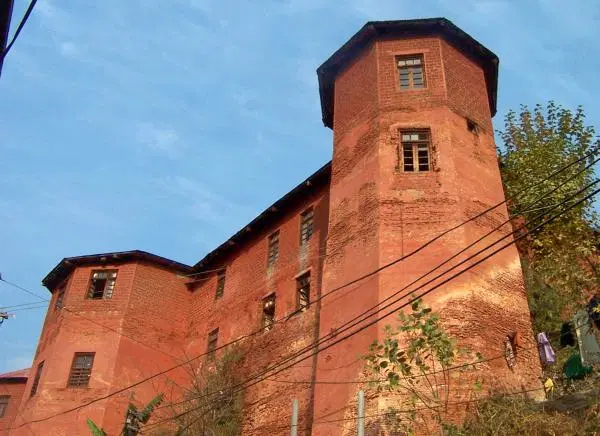
A royal legacy and artistic heritage of the region finds its perfect expression at Rang Mahal within the enchanting Chamba landscapes. The palace at Rang Mahal displays its royal charm through artistic murals and elaborate wooden decorations while providing guests an opportunity to explore the former glory of Chamba during its royal days. Rang Mahal welcomes all visitors through its doors as a cultural gem to experience the exceptional past of Chamba’s heritage.
History
The Palace of Colors, Rang Mahal, reached completion in the mid-18th century when royal leader Raja Umed Singh constructed it to provide dwelling space for his royal family. As a representation of the cultural advance and financial stability of the kingdom Rang Mahal functioned. Rang Mahal transformed into an administrative center through time when some parts of the palace began functioning as royal administrative offices.
The British period brought adjustments to the building yet the historical structures maintained their traditional characteristics intact. Rang Mahal stands today as both an historical monument and museum where visitors can see outstanding artifacts combined with paintings and traditional crafts which showcase the deep heritage of Chamba.
The architecture of Rang Mahal fuses Mughal and Pahari elements showing its impressive red sandstone exterior walls alongside expansive corridors with elaborate woodwork added to the balconies. Inner palace walls feature brightly painted frescoes which show scenes from Hindu religion as well as pictures of royal activities and tales from local traditions.
Rang Mahal stands out for its walls covered by colorful murals that artists painted through traditional Chamba art methods. Different murals at this location display elaborate details and strong colors which attract art fans visually.
The architectural excellence of the palace enhances through its extravagant woodwork, complex door carvings, alongside indoor latticed windows. The architectural masterpiece becomes visible through palace tours since they allow guests to observe the skilled craftsmanship.
Best Time to Visit
Rang Mahal offers its best experience between March to June and September to November as the weather then becomes perfect for tourists to explore the site. The cultural festivals in Chamba elevate the palace experience because people get to see heritage-bound celebrations and watch traditional performances.
6. AKHAND CHANDI PALACE

In the historic town of Chamba stands the majestic Akhand Chandi Palace which takes residence on a mountain slope while sharing both royal opulence and historical importance. With its grand halls, exquisite frescoes, and panoramic views of the surrounding mountains and valleys, the palace offers visitors a unique glimpse into Chamba’s royal past. The visit to Akhand Chandi Palace creates an everlasting memory that harmoniously unites history alongside art and cultural elements within its picturesque location.
History
The Akhand Chandi Palace came into existence through Raja Umed Singh during the mid-1700s when he ruled Chamba. Throughout its history the palace received multiple alterations from successive rulers starting with Raja Sham Singh who implemented new wings and decorative components to increase its magnificence.
The palace received extensive changes under British governance when European style architecture joined traditional Himachali architectural design principles. This royal palace held its function as both royal residence and administrative center for Chamba’s ruling family which made it central to kingdom governance and cultural activities.
The Akhand Chandi Palace showcases a design that combines British, Mughal and Himachali architectural elements which result from the multiple cultural influences throughout its history. The palace exterior displays a white surface which along with its arched windows and sloping slate roofing makes for an eye-catching appearance that is complemented by the traditional wooden decorations on doors as well as balconies.
The halls of the palace extend through expansive spaces where guests can admire Hindu mythological frescoes and pictures of royal existence and local folklore. Guests find special interest in Durbar Hall because the assembly hall showcases regal decoration along with elaborate ceiling and ornate chandeliers.
A picturesque view of the Chamba valley can be seen from the palace since it extends to the Lakshmi Narayan Temple and Rang Mahal and the Dhauladhar mountains in the distant horizon. You can find this palace secluded and peaceful and it provides an ideal location for both taking photos and spending quiet time because of its spectacular natural ambiance.
The palace stands as a main protector and promoter of Chamba’s traditional arts while keeping alive the production of the distinguished Chamba rumals and other handicrafts like miniature paintings and woodcarvings.
Best Time to Visit
The most favorable season to explore Akhand Chandi Palace occurs from March through June and stretches to September through November because these months provide excellent weather conditions. People can experience the energetic Minjar Mela together with Dussehra celebrations at the palace during major cultural events in Chamba.
7. KALATOP WILDLIFE SANCTUARY
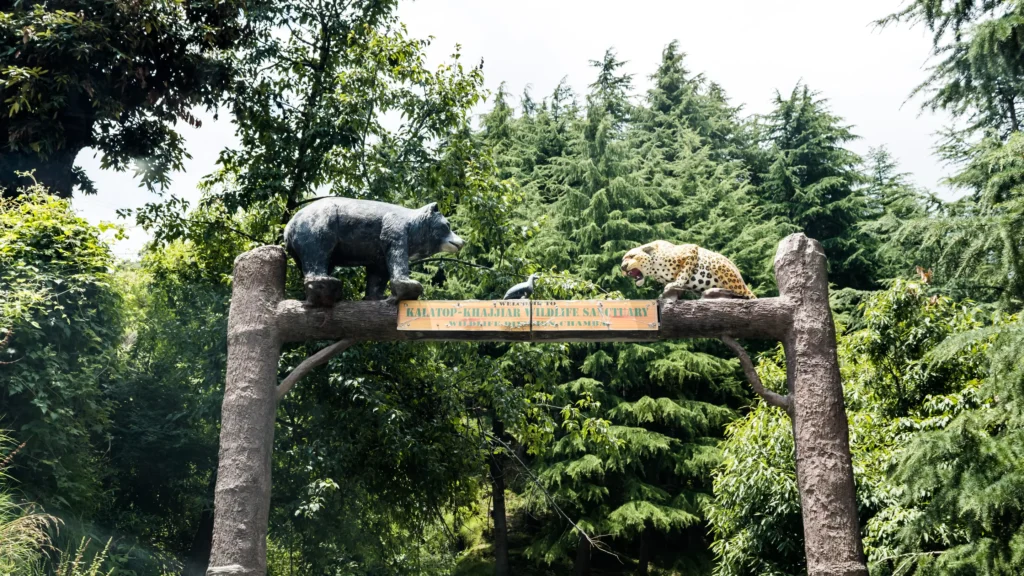
Located within the verdant landscape of Himachal Pradesh lies the Kalatop Wildlife Sanctuary which provides solace to all people who enjoy nature alongside the thrill of adventure and wildlife observation. Near Dalhousie hill station lies this beautiful sanctuary which gives visitors an opportunity to discover Himalayan natural beauty through observation of diverse plant and animal life in their original habitat. Your visit to Dalhousie becomes truly remarkable by adding the Kalatop Wildlife Sanctuary to your travel destinations.
History
Kalatop Wildlife Sanctuary received its establishment as a protected area in 1958 while it claims 31 square kilometers of land space as part of the Khajjiar Conservation Reserve. Time has bestowed upon the sanctuary its name “Kalatop” which means “black cap” due to its heavy deodar and oak tree canopy that envelops the entire area. When the British established this area they used it as a game reserve before it gained protection status to protect its rich biodiversity.
Best Time to Visit
The ideal period for visiting Kalatop Wildlife Sanctuary exists in March through May and September until November. The forest reaches its peak of quality and animal encounters become more common during these specific months. Ice and snow cover the sanctuary during December to February while bringing enchantment to this protected area.
8. KHAJJIAR LAKE
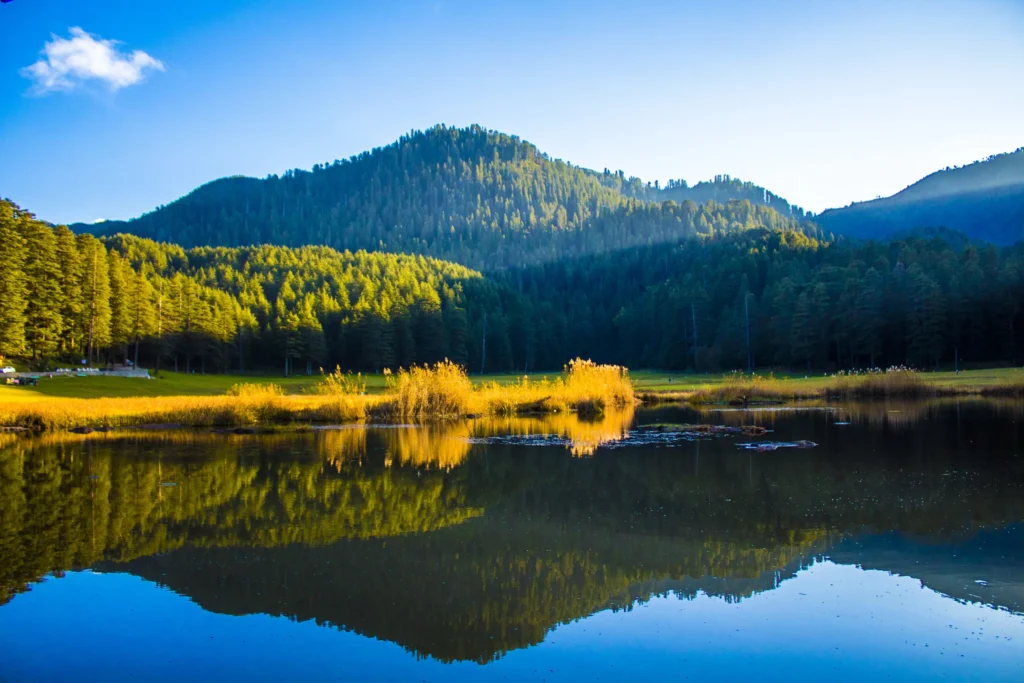
Himachal Pradesh’s Khajjiar Lake has captured the “Mini Switzerland of India” title because it lies within the deodar forest region and lush green meadows of Himachal Pradesh. Travelers should make Khajjiar Lake their must-stop destination because it resides just beyond Dalhousie while situated right at the center of Khajjiar. Khajjiar Lake provides visitors with an enchanting journey into natural beauty because it presents magnificent scenic beauty along with cultural attractions together with various recreational possibilities.
History
The historical significance of Khajjiar Lake remains prominent because ancient temples and monuments are scattered around its shores. Visitors can explore one of the major Khajji Nag Temple which honors Nag Devta through serpents because this shrine dates back to the 12th century. The temple from the 12th century exhibits an architecture combination of Hindu and Mughal design characteristics. The temple houses wooden Mahabharata illustrations and numerous mythological statues including deities and snake idols.
People visit Khajjiar because the lake combined with the temple forms the heart of regional folklore and religious worship so devotees come seeking blessings while performing age-old ceremonies at this sacred place. The cultural importance of Khajjiar Lake creates both religious significance and natural beauty which makes it an important religious site for worshipers extending beyond local followers.
The elevation of Khajjiar Lake reaches 1,920 meters (6,300 feet) above sea level where it embraces a valley with green grassland edges and deodar tree forests and snowy mountain ranges as its background. The peaceful lake water produces a beautiful reflection of both sky and forest trees creating a timeless view which poets and artists appreciated throughout the centuries.
The distinctive characteristic of Khajjiar Lake includes a natural floating island which appears on its water surface. A cluster of grass and moss forms the floating mass which creates additional charm and mystery for Khajjiar Lake. The natural meadow features a distribution of wildflowers which creates perfect conditions for picnicking along with leisure-walking and outdoor recreational pursuits.
Best Time to Visit
Visitors can find summer months from March to June suitable since the pleasant environment combines with green meadows to create perfect conditions for outdoor leisure and scenic exploration.
During July to September (monsoon season) the lake along with its surroundings flourishes with abundant green vegetation.
From October to February Khajjiar sees wintertime arrival which deposits snow across the lake area resulting in a magical wintry scene. During this period snow enthusiasts together with visitors who want to experience magical snow scenes should book a visit.
9. SADHUPUL LAKE

The lake of Sadhupul rests between Solan and Chail where it provides visitors peaceful access to nature. The appealing tourist destination of Sadhupul Lake attracts visitors with its pristine water and attractive forest landscapes and quiet feelings of calm. Sadhupul Lake delivers both an enjoyable lakeside rest and thrilling activities together with a memorable dining experience at its famous riverside café.
Sadhupul Lake presents its stunning landscape of mountains and trees within the green forests of Himachal Pradesh while providing a tranquil environment. The soothing combination of lake water flow along with bird song and leaf movements produces a peaceful harmony which makes the mind serene and restores spiritual energy. The lakeside area at Sadhupul Lake invites relaxation while walking trails present opportunities for exploration and the entire site serves as a magnificent hidden nature spot.
Visitors have the chance to enjoy a meal at the floating café which provides platforms situated directly in the water for diners at Sadhupul Lake. Guests can savor their food selections along with lake water bathing at this unique urban fresh water dining spot which provides local delicacies and beverages and snacks near Sadhupul Lake. People find the floating café experience doubly delightful because it offers both refreshment and pleasure thus becoming a favorite attraction of Sadhupul Lake visitors.
Best Time to Visit
Summers from March to June as well as the post-monsoonal month of September to November represent the ideal seasons to explore Sadhupul Lake. The lake presents its finest natural beauty along with pleasant weather during summer and post-monsoon months. Sadhupul Lake experiences both its best months during summer along with post-monsoon since monsoon rains make the surroundings verdant while winter brings pleasant temperature changes.
10. CHAMUNDA DEVI TEMPLE
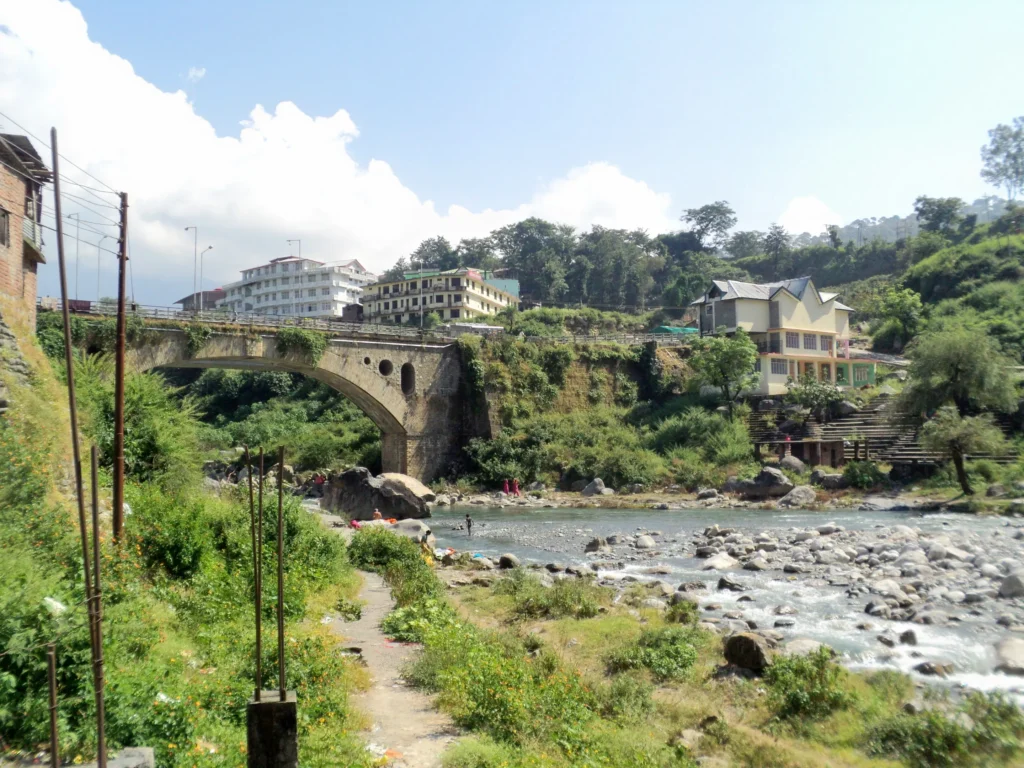
The ‘Chamunda Nandikeshwar Dham’ represents one of the most prominent sacred sites of the Hindus under its name Chamunda Devi Temple. Goddess Kali receives devotion at this temple which builders completed during the governance of Umed Singh. The temple of Chamunda Devi serves as a sanctuary for Lord Shiva and Mata Shakti while featuring exceptional architectural design from past times.
The sacred site finds its position next to the Baner (Banganga) River stream while positioned within Kangra district of Himachal Pradesh approximately 10 kilometers west of famous Palampur. Chamba residents along with devotees from all over India consistently visit this location because of its yearlong popularity. The Navratri period brings peak activity to Chamunda Devi as a massive number of worshippers visit to receive her blessings.
With silver sheets decorated by floral and animal motifs this 16th-century temple stands as a unique ancient masterpiece. The entire temple structure consists of wood materials with multiple gabled roofs. The temple contains a scooped cave space featuring Nandikeshwar (Shiva) representations through Lingams in addition to a running water pool where Lord Shiva and Saraswati statues stand at its back end.
Besides the temple complex maintains a handicraft center which enables people to encounter Kangra district’s vibrant cultural heritage through the locally handmade products. Tourists can find various items for purchase at the temple complex that includes wood carvings and wooden toys together with handkerchiefs, honey, black pottery, chappals, and Kangra tea and world-famous Kangra paintings and more. The temple radiance becomes magnificent as it fills all surroundings with calmness while spewing joyful energy. Himachal travel packages offer visitors the chance to worship at Chamunda Devi Temple while unlocking the cultural treasures of the state. Through their carefully designed packages these travel packages lead visitors to this holy spot while enabling them to learn about the local culture in an environment of natural beauty.
The Best Period for Visiting
The Hindu place of worship Chamunda Devi Temple attracts devotees all year especially Indians nationally and internationally due to its position as a vital religious site. The elevations of this shrine determine that weather conditions are crucial for selecting the perfect time to visit.
The June through October months bring a pleasant climate to Chamunda Devi Temple which transforms into cold temperatures afterward. Toward the close of the year enthusiasts can fully experience the spiritual enthusiasm of the annual Navratri observances.
The temple receives beautiful decorating enhancements of lights and flowers to celebrate festivals which attract worshipers from every part of the country to get Goddess’s blessings. During this celebratory period travelers gain the chance to appreciate both the abundant natural vegetation and panoramic viewpoints of mountains with valleys that surround the temple.
Location: Chamba-Jhumar Rd, Mohalla Surara, Mohalla Sapri, Chamba, Himachal Pradesh 176310
Price: No entry fee
Timings: Sunrise to Sunset
History
Both the temple’s historical background matches the scenic beauty that visitors adore when standing upon the mountain peak. An image of Ambika resting on a mountain top was until two nasty demons named Munda and Chanda appeared that made Kali emerge due to her displeasure.
Two demons met their end at the hands of this wrathful Kali and eventually the Chamunda Devi temple emerged to worship her with the title Chamunda Devi on the same ground. The deity wore adornments consisting of bones together with skulls and serpents and scorpions because these items symbolize illness and dying.
Whichever historical evidence points towards this place of worship being in an isolated jungle a shift took place to its current position about 400 years ago. Goddess’s divine power led to the discovery of the temple’s deity after digging the soil before its establishment at this site.
The temple showcases paintings that present Goddess Mahatamay together with illustrations from the stories of both Ramayana and Mahabharata. Two additional idols of Hanuman and Bhairon stand beside the main Goddess Chamunda Devi figure at the temple where they watch over the holy deity.
Related articles : Top 10 Best Places Visiting in Gurugram for Culture, Nature & Entertainment
Stay Informed With the Latest & Most Important News
Previous Post
Next Post
-
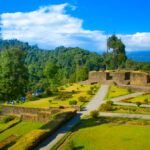 01Top 5 Best Places Visiting in Gyalshing – Monasteries, Lakes & Scenic Escapes
01Top 5 Best Places Visiting in Gyalshing – Monasteries, Lakes & Scenic Escapes -
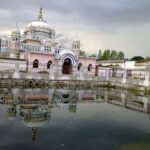 02Top 5 Best Places Visiting in Panna – Temples, Waterfalls & Wildlife Escapes
02Top 5 Best Places Visiting in Panna – Temples, Waterfalls & Wildlife Escapes -
 03Top 5 Best Places to Visit in Malerkotla – Malerkotla Fort, Sheesh Mahal & More
03Top 5 Best Places to Visit in Malerkotla – Malerkotla Fort, Sheesh Mahal & More -
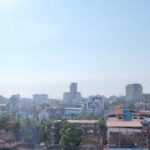 04Top 10 Best Places Visiting in Dakshina Kannad for Culture, Nature & Coastal Charm
04Top 10 Best Places Visiting in Dakshina Kannad for Culture, Nature & Coastal Charm -
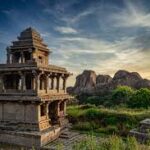 05Top 2 Best Places Visiting in Chitradurga for History, Nature & Adventure
05Top 2 Best Places Visiting in Chitradurga for History, Nature & Adventure -
 06Best Places Visiting in Shopian – Explore Top Attractions & Hidden Gems
06Best Places Visiting in Shopian – Explore Top Attractions & Hidden Gems -
 07Best Places Visiting in Narmadapuram – Temples, Waterfalls & Wildlife Escapes
07Best Places Visiting in Narmadapuram – Temples, Waterfalls & Wildlife Escapes














Pingback: Top 10 Best Places Visiting in Hisar – Explore Haryana's Historic City